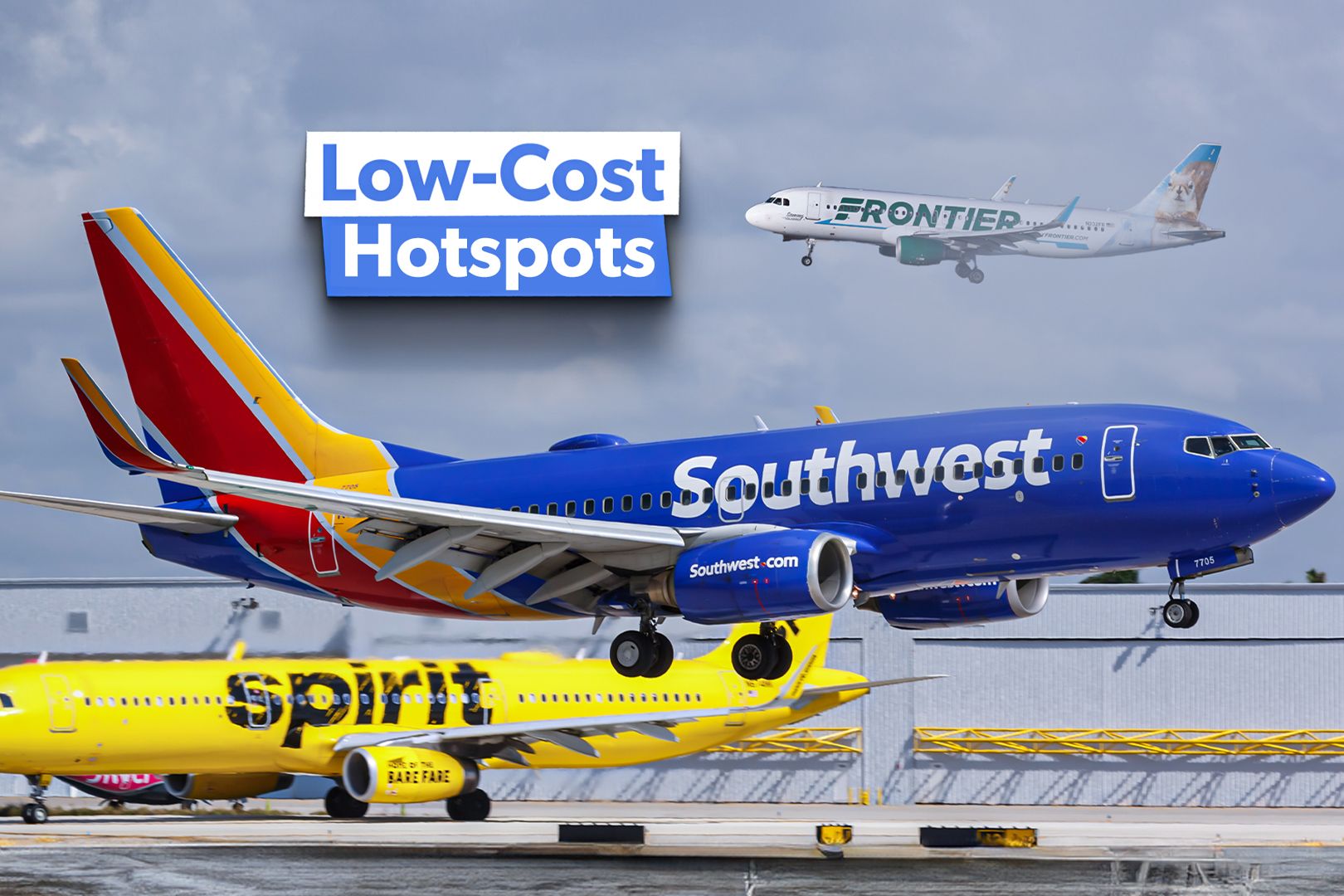Summary Low-cost carriers (LCCs) have expanded significantly, influencing domestic travel in the US. States like Florida, California, Texas, Nevada, and New York have the most low-cost airline seats this year. While LCCs offer cheaper prices and conveniences, legacy carriers still hold the majority of seats.
In an industry where there is exceeding demand for premium and luxurious airline experiences regardless of the cost, many travelers still prioritize finding a deal on flights. The low-cost market has expanded significantly over the past decade. In 2015, low-cost carriers (LCCs) carried 984 million passengers, which accounted for 28% of all scheduled passengers in the world, according to the International Civil Aviation Organization (ICAO) .

The demand continues as the market is expected to reach more than $440 billion globally by 2030. While these airlines have influenced the domestic scene in the US, it is clear that some states have more lower-cost flights than others. This can be attributed to each carrier's differences, such as its operating model, where it might be based, and the frequency of flights.
Regardless, some travelers simply do have a preference other than spending the least amount of money that they can to travel from A to B. However, there are some differences between LCCs and ultra-low-cost carriers (ULCCs). LCCs, such as Southwest Airlines or JetBlue Airways, strive to offer cheap flights, but they typically have better perks and no hidden fees.
For example, Southwest’s base fare may be $99 one-way, but it also offers free checked bags, complimentary non-alcoholic beverages, and a light snack. ULCCs often have an even lower base fare, such as Frontier Airlines selling one-way flights for $45. However, passengers onboard likely shelve out more money, such as purchasing food and drinks or bringing a carry-on item.
The top five states with the most seats on LCCs this year include two on the East Coast, one in the midsection of the country, and two on the West Coast, according to flight database and statistics provider OAG . 1 Florida 62,446,113 seats The Sunshine State has the most low-cost seats at more than 62 million. This is largely due to Spirit Airlines ' presence.
The carrier operates an extensive network out of Fort Lauderdale–Hollywood International Airport (FLL). In 2021, the airline carried 3.56 million passengers at the airport, according to Statista .
Spirit also serves nearby Miami International Airport (MIA), specifically competing with Southwest. However, the intra-Florida routes served by the two carriers originate from FLL. Southwest specifically has a strong presence at Orlando International Airport (MCO).
The airline had the largest market share at the airport in 2023 at 19.30%, followed by: Spirit: 16.90% Delta Air Lines: 12.
52% Frontier: 12.32% Legacy carriers still have the majority of seats scheduled in the state this year at more than 70 million. LCC seats account for 46.
2% of Florida’s market share, while legacy airlines have 53.8%. 2 California 51,047,269 seats The Golden State has the second-highest amount of LCC seats this year with over 51 million.
It accounts for 36.1% of the market share compared to legacy carriers, which have 63.9% of the market share.
Compared to Florida, legacy carriers have much more seats than LCCs at more than 90 million. This is due to two main airports being hubs for the legacy airlines: Los Angeles International Airport (LAX): American Airlines, Delta, United Airlines San Francisco International Airport (SFO): United Although SFO is not a hub for American or Delta, the two airlines maintain a robust operation at the airport, with popular and premium transcontinental routes to John F. Kennedy International Airport (JFK) and Boston Logan International Airport (BOS).
3 Texas 42,751,685 seats The Lone Star State comes in third with more than 42 million seats, accounting for 32.5% of the market share. Frontier has grown significantly over the years at Dallas/Fort Worth International Airport (DFW), competing directly with American.
However, Southwest has more in-state routes at several airports: Dallas Love Field (DAL) San Antonio International Airport (SAT) William P. Hobby Airport (HOU) Austin–Bergstrom International Airport (AUS) Rick Husband Amarillo International Airport (AMA) El Paso International Airport (ELP) Midland International Air and Space Port (MAF) Lubbock Preston Smith International Airport (LBB) At 88,655,948, legacy carriers have more than double the amount of seats compared to LCCs and ULCCs. This can be attributed to American’s large network at DFW and United’s extensive operation at George Bush Intercontinental Airport (IAH) in Houston.
4 Nevada 26,123,608 seats Nevada comes in fourth with just over 26 million seats on LCCs. Most of the state’s traffic comes from Harry Reid International Airport (LAS), but airlines also serve Reno–Tahoe International Airport (RNO). Southwest drives the LCC seat count.
In 2021, the carrier handled 13.7 million passengers at LAS, according to Statista . Allegiant Air also has a significant presence in Sin City.
Interestingly, Nevada is the only state among the top five with more LCC seats than legacy competitors. LCCs have 66.7% of the market share this year Legacy airlines have 13,034,391 seats, accounting for 33.
3% of the market share 5 New York 25,062,481 seats New York has over 25 million low-cost seats this year, accounting for about a quarter of the market share. The Big Apple, of course, is a popular market, as nearly every airline in the US serves at least one of the metropolitan area’s airports . Similar to California, legacy carriers have hubs at the airports, with American and Delta specifically calling two of the three airports a hub: JFK: American and Delta LaGuardia Airport (LGA): American and Delta Newark Liberty International Airport (EWR): United In the low-cost scene, it is more common for airlines to serve either one or two New York area airports.
Southwest only serves LGA, while Spirit serves LGA and EWR. Allegiant only operates at EWR, and Frontier serves both LGA and JFK. JetBlue serves all three airports, along with American and Delta.
Each airline is different, but the bottom line is that their fares are often less expensive than their legacy counterparts. However, although LCCs have made a name for themselves in the industry, legacy carriers still carry the industry with more seats overall..


















